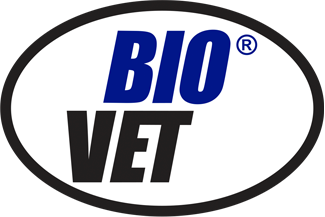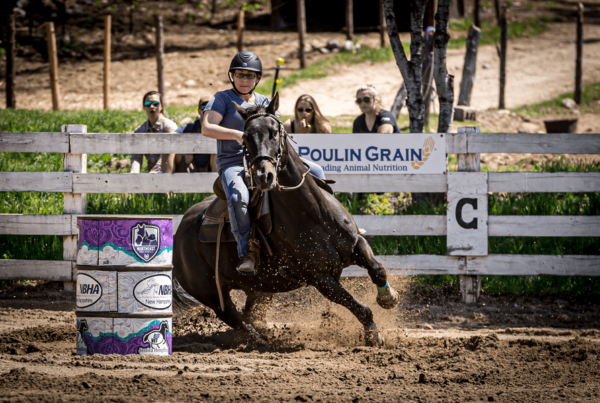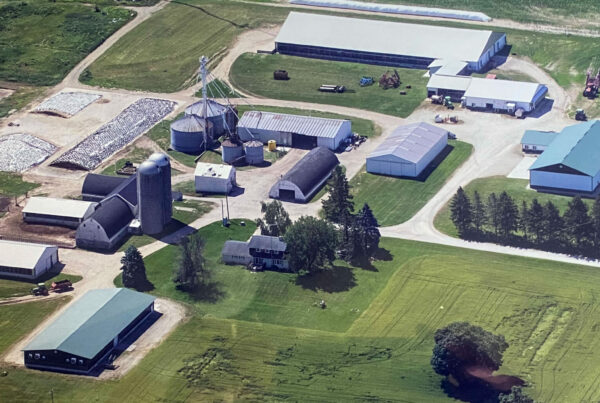If you have livestock, you inherently face the risk of disease. The impact of these diseases can vary widely, depending on infection rate, symptoms, and the type of organism involved. Over the years, some diseases have gained notoriety for being highly transmissible, difficult to manage, or economically devastating, earning the title of an infectious disease. So what is the history of infectious diseases, the current situation, and future implications?
What Qualifies as an Infectious Disease?
Dr. Nate Haas, a veterinarian and the President of Bio-Vet, explains, “Oftentimes, we’ll call them communicable or contagious diseases, although that isn’t always completely accurate. Essentially, we’re talking about diseases that stem from the introduction of a microorganism. This could be a virus, bacteria, fungus, parasite, or protozoan”.
Historical Challenges: Brucellosis and Foot-and-Mouth Disease
Historically, diseases like brucellosis and foot-and-mouth disease have posed significant risks to both livestock and humans. These diseases became well-known due to their ability to spread and cause serious economic and health impacts.
Brucellosis, also known as Bang’s disease, was a major concern in the early days of livestock farming in the United States. It caused abortions in cattle and was responsible for milk-borne illnesses in humans. Fortunately, the introduction of vaccinations and pasteurization laws has made brucellosis much more manageable today.
Foot-and-mouth disease is another highly contagious disease that, while rarely fatal, severely impacts animal productivity. Infected animals often suffer from fever, painful lesions, and a significant drop in milk production and weight gain. This not only affects the health of the animals but also leads to considerable economic losses due to drop in milk production.
The Current Threat: Highly Pathogenic Avian Influenza (HPAI)
Today, a new infectious disease has emerged as a major concern: Highly Pathogenic Avian Influenza (HPAI), commonly known as bird flu. While initially affecting poultry, HPAI has recently spread to cattle, causing significant health issues.
Infected cows experience symptoms of dehydration and overall suppressed health, leading to a drop in milk production. The focus now is on maintaining the health of these animals by ensuring proper nutrition and hydration. For example, using products like Bovine GoldLyte® can provide essential electrolytes and fluid support that help animals recover more quickly and return to production.
Preventive Measures and Future Outlook
As we look to the future, a few things become clear. Early detection and targeted treatment are crucial for managing infectious diseases effectively. As farms grow larger and diseases become more widespread, biosecurity and preventive measures become increasingly important.
Dr. Haas emphasizes, “If we can naturally prevent diseases without harming the animal, it benefits not only the health of the livestock but also their productivity. These preventive measures help animals convert food into energy more efficiently, produce more milk, grow better, and build a stronger immune system”.
Biosecurity practices—such as controlled access, sanitation, and the use of personal protective equipment like boots, masks and gloves—are essential for reducing the risk of disease spread. Farms that prioritize these measures, along with maintaining high animal health through proper nutrition and health support, will be better equipped to mitigate risk of disease.
Additionally, advances in technology, like rumen monitors, are also playing a key role in early disease detection. These tools allow for quicker responses to sickness, allowing to start treatment protocols earlier and take preventive action, like quarantining sick animals.
A Call to Action
Infectious diseases have been a persistent challenge in livestock management, from the days of brucellosis and foot-and-mouth disease to the current threat of HPAI. Moving forward, the key to managing these risks lies in early detection, effective biosecurity measures, animal immune support, and ongoing advancements in technology.
Farmers who stay informed and proactive, and implement strong biosecurity plans while using preventive measures, are likely to protect their animals better—in turn, reducing the impact of infectious diseases and helping to ensure the health and productivity of their herds for years to come.






